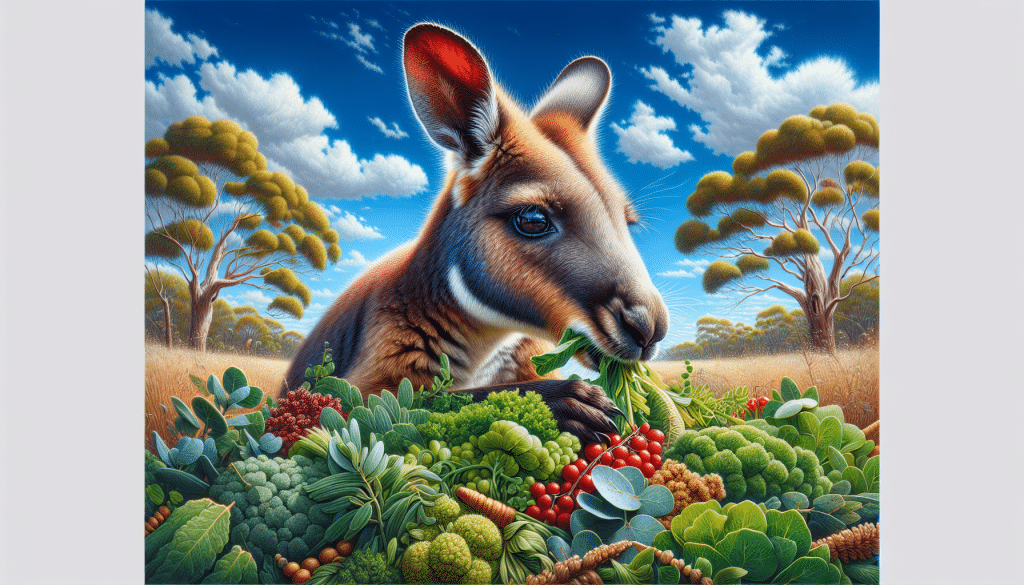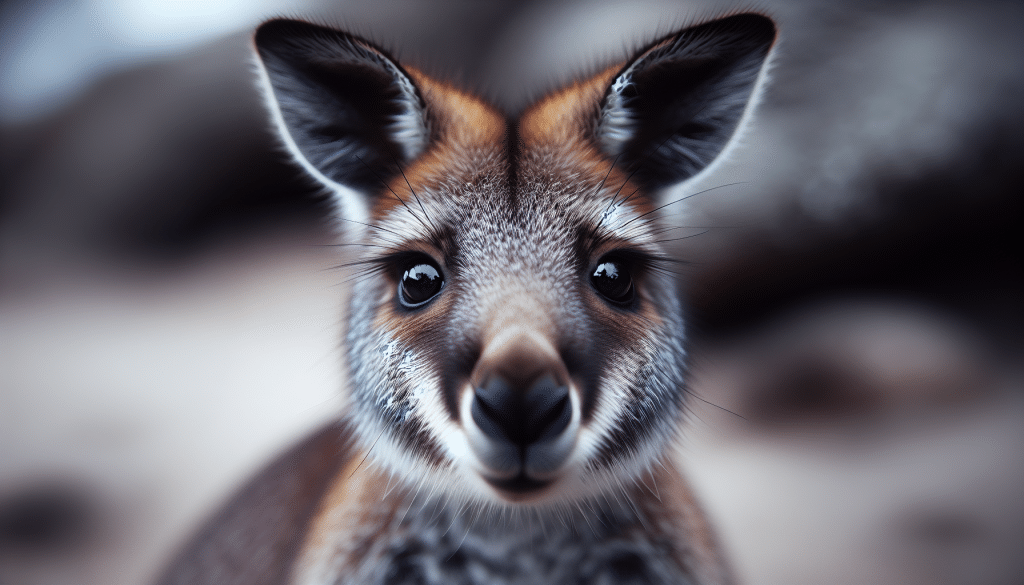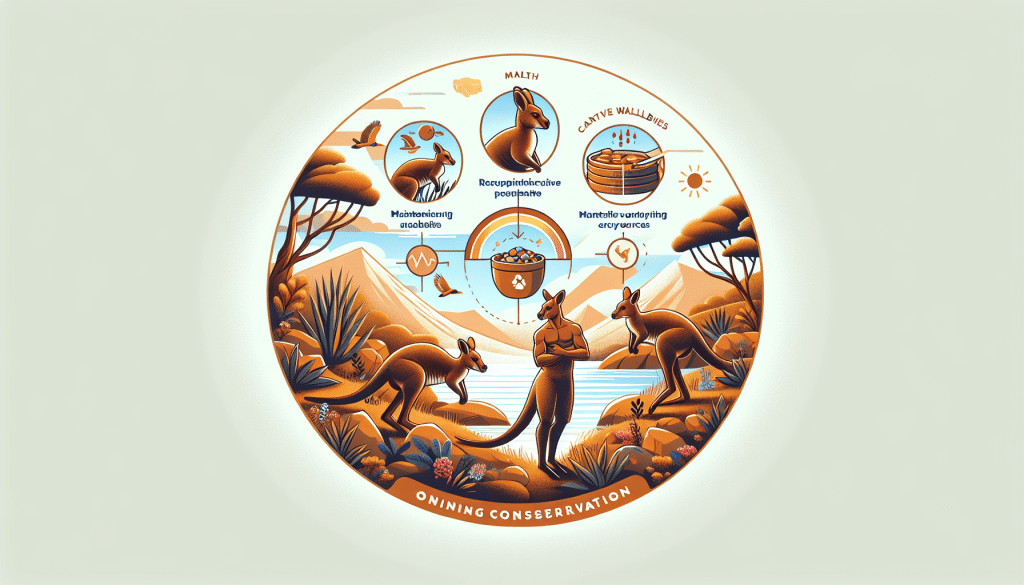So, you’re curious about the dietary needs of wallabies, huh? Well, let me tell you, these little kangaroo-like creatures are quite the food enthusiasts. From munching on grass, leaves, and shrubs to enjoying the occasional tasty treat, wallabies have a unique and diverse palate. In this article, we’ll dive into the world of wallaby cuisine and unveil some fascinating facts about their diet and nutrition. Get ready to discover the culinary habits of these hopping herbivores like you’ve never seen before!

Understanding Wallabies
Defining the Wallaby: Species and Habitat
Wallabies are fascinating creatures that belong to the same family as kangaroos. They are marsupials and can be found in various regions across Australia and New Guinea. These adorable animals come in several different species, such as the red-necked wallaby, the Agile wallaby, and the Matschie’s tree kangaroo.
Wallabies have adapted to a diverse range of habitats, including forests, grasslands, and even rocky areas. These versatile creatures have managed to thrive in environments with different climates and vegetation. It’s no wonder they have captured the hearts of many nature enthusiasts!
Physical Characteristics and Dietary Implications
Wallabies have unique physical characteristics that align with their dietary needs. They possess strong hind legs and a powerful tail, which helps them balance and move swiftly across various terrains. Their long, slender face and sharp teeth are perfectly designed for chewing and grinding vegetation.
One interesting aspect of wallabies’ digestive systems is the presence of a large fermentation chamber called the foregut. This allows them to efficiently digest plant material, which makes up the majority of their diet. They are classified as herbivorous animals, relying on plant-based foods for their nutritional needs.
The Wallaby’s Natural Diet in the Wild
In the wild, wallabies primarily feed on a variety of natural vegetation and grasses. These include plants like grass, leaves, herbs, and even bark. Their natural diet is rich in fibers, which play a significant role in their digestive health. Wallabies have become master grazers, spending a substantial amount of time nibbling on grass and plants to meet their nutritional requirements.
Nutritional Requirements
Macronutrients: Proteins, Carbohydrates, and Fats
Just like humans, wallabies require macronutrients to maintain good health. Proteins, which are essential for growth and repair of body tissues, can be obtained from legumes, leafy greens, and certain grasses. Carbohydrates, providing energy for daily activities, are abundant in fruits and vegetables like apples, carrots, and sweet potatoes. Fats, necessary for insulation and as an energy reserve, can be found in small amounts in some plant-based foods.
Vital Vitamins for Wallabies
Vitamins play a crucial role in wallabies’ overall well-being. Vitamin A, found in dark leafy greens, helps maintain healthy vision and supports their immune system. Vitamin D, obtained through exposure to sunlight, promotes strong bones and aids in calcium absorption. Vitamin E, present in nuts and seeds, acts as an antioxidant, protecting cells from damage. Wallabies also require a source of Vitamin C, which helps with collagen synthesis and enhances their immune system.
Essential Minerals and Their Roles
Wallabies rely on mineral intake to support various bodily functions. Calcium is vital for the development and maintenance of strong bones and teeth. It can be found in leafy green vegetables, as well as certain grasses. Phosphorus, another essential mineral, is necessary for energy metabolism and bone formation. Wallabies can obtain phosphorus through a range of plant-based foods.

The Role of Fiber
Types of Fiber in a Wallaby’s Diet
Fiber is an essential component of a wallaby’s diet and is crucial for maintaining a healthy digestive system. There are two types of fiber: soluble and insoluble. Soluble fiber, found in fruits and vegetables, forms a gel-like substance during digestion, aiding in nutrient absorption and regulating blood sugar levels. Insoluble fiber, mostly present in plant cell walls, adds bulk to the stool, promoting regular bowel movements.
Benefits of High-Fiber Foods
Including high-fiber foods in a wallaby’s diet provides numerous benefits. Fiber aids in maintaining a healthy weight as it helps control appetite and makes the wallaby feel fuller for longer. It also plays a vital role in preventing constipation and promoting proper digestion. High-fiber foods can contribute to a healthy gut microbiome, allowing the wallaby to better absorb nutrients and support a robust immune system.
Fiber’s Impact on Digestive Health
Wallabies have a unique digestive system that relies on fiber-rich foods. The presence of high-fiber vegetation in their diet helps keep their digestive tract functioning optimally. Fiber assists in breaking down tough plant material, promotes the growth of beneficial bacteria in the gut, and prevents the occurrence of digestive disorders. It’s safe to say that fiber is a crucial component in the well-being of these bouncing creatures!
Foods to Include
Natural Vegetation and Grasses
To satisfy a wallaby’s natural dietary needs, it’s essential to incorporate natural vegetation and a variety of grasses into their diet. This can include different types of grasses, such as kangaroo grass and wallaby grass, as well as native plants like eucalyptus leaves and wattle. These food sources mimic what wallabies would consume in the wild, ensuring they receive the necessary nutrients for their well-being.
Fruits and Vegetables: What’s Safe for Wallabies
When it comes to fruits and vegetables, wallabies can enjoy a range of options. Some safe choices include apples, pears, carrots, sweet potatoes, and leafy greens like kale and spinach. These foods provide important vitamins and minerals, as well as additional antioxidants that can support the wallaby’s health.
Commercially Available Wallaby Diets
For those who may not have access to a wide variety of fresh vegetation, commercially available wallaby diets can be a convenient option. These diets are specially formulated to meet the nutritional needs of wallabies while providing a balanced mix of fibers, proteins, and other essential nutrients. It’s essential to research and choose reputable brands that offer high-quality and species-specific wallaby diets.

Foods to Avoid
Toxic Plants and Dangerous Substances
Not all vegetation is safe for wallabies to consume. Some plants can be toxic and even pose a significant threat to their health. Examples of toxic plants include oleander, azaleas, and lantana. It’s important to identify and eliminate these plants from the wallaby’s environment to prevent accidental ingestion.
Unsuitable Food Items from Human Diets
While wallabies may be tempted by some human foods, certain items can be harmful or unsuitable for their consumption. Chocolate, caffeine, alcohol, and processed foods should be avoided, as they can cause digestive upset or even toxicity. It’s crucial to keep such foods out of the wallaby’s reach and ensure they are not accidentally ingested.
Understanding the Risks of an Inappropriate Diet
Feeding a wallaby an inappropriate diet can lead to various health issues. A diet lacking in essential nutrients can result in malnutrition, weakened immune function, and even organ damage. On the other hand, an imbalanced diet with excessive sugars or unhealthy fats can contribute to obesity and metabolic disorders. It’s vital to maintain a proper understanding of the wallaby’s dietary needs to prevent these risks.
Feeding Behavior
Grazing Patterns and Feeding Times
Wallabies have unique grazing patterns and feeding times that reflect their natural instincts. They are crepuscular animals, meaning they are most active during dawn and dusk. This is when they typically graze on vegetation, ensuring they meet their nutritional requirements. Understanding and respecting their natural feeding behavior can help create a healthy and balanced diet for these amazing creatures.
Portion Size and Frequency of Feedings
Determining the appropriate portion size and frequency of feedings is essential for a wallaby’s well-being. It’s recommended to provide smaller, frequent meals throughout the day to mimic their natural grazing behavior. This allows them to digest their food properly and prevents overeating. Monitoring their weight and overall health can help adjust portion sizes accordingly.
Adapting Feeding Practices to Age and Health
As wallabies age or face specific health conditions, their dietary needs may change. Juvenile wallabies require additional nutrients for growth and development, while pregnant and lactating females may require extra calories and specific nutrients to support their offspring. Senior or ill wallabies may need adjustments to their diet to accommodate any health concerns. Consulting with a veterinarian or a wildlife expert can ensure proper feeding practices for each individual wallaby.
Special Dietary Considerations
Dietary Needs of Juvenile Wallabies
Juvenile wallabies have specific dietary needs for proper growth and development. They require a higher intake of proteins and minerals to support bone and muscle growth. It’s essential to provide a nutritionally dense diet that includes easily digestible foods and smaller portions, as their stomach capacity is smaller than that of adult wallabies. Consultation with a wildlife expert can help create a suitable diet plan for juvenile wallabies.
Pregnant and Lactating Females
Pregnant and lactating female wallabies require additional nutrients to support the growth and nourishment of their young. A diet rich in proteins, vitamins, and minerals is crucial during this period. Providing adequate calories and essential nutrients fosters proper development in their offspring. Wallabies in these life stages may benefit from specialized diets designed to meet their increased nutritional needs.
Addressing the Needs of Old or Ill Wallabies
Old or ill wallabies may experience changes in their appetite, digestion, or overall health. It’s important to adjust their diet accordingly to cater to their specific needs. Softer foods may be preferred to alleviate any dental issues, while additional supplements or fortified feeds may be necessary to ensure they obtain the required nutrients. Regular monitoring and consultation with a veterinarian can help address the unique dietary needs of old or ill wallabies.
Water Intake and Hydration
Importance of Water in a Wallaby’s Diet
Water is an essential component of a wallaby’s diet, as it influences various physiological processes within their bodies. Adequate hydration is crucial for digestion, temperature regulation, and nutrient absorption. Wallabies should have constant access to clean and fresh water sources to meet their hydration needs.
Access to Clean Water Sources
Providing access to clean water sources is vital for a wallaby’s well-being. The water should be regularly replenished and free from contaminants. Wallabies often obtain water from natural sources like rivers, lakes, or rainwater, so it’s essential to ensure they have access to clean water in their enclosures or habitats.
Monitoring Hydration Levels
Monitoring a wallaby’s hydration levels is key to their overall health. Signs of dehydration may include dry or sticky gums, sunken eyes, lethargy, and decreased urine output. If any of these signs are observed, it’s crucial to ensure the wallaby has access to water and consult with a veterinarian if the symptoms persist. Staying vigilant about their hydration status is essential for preventing health issues.
Supplementation and Fortified Feeds
When Supplementation Is Necessary
In some cases, supplementation may be necessary to ensure wallabies receive all the required nutrients. This is especially important when certain nutrients are lacking in their diet or when specific health conditions exist. A veterinarian or wildlife expert can provide guidance on appropriate supplements for wallabies, taking into consideration their specific needs and ensuring proper dosage.
Types of Supplements for Wallabies
Supplements for wallabies may include vitamins, minerals, or specialized formulas designed to address specific nutritional deficiencies. Calcium and vitamin D supplements are commonly used to support bone health. It’s crucial to source supplements from reputable brands and consult with experts to ensure the appropriateness and safety of the chosen supplement.
Risks of Over-Supplementation
While supplementation can be beneficial, it’s important to avoid over-supplementation, as this can cause imbalances and adverse effects. Excessive amounts of certain vitamins or minerals may lead to toxicity or interfere with the absorption of other essential nutrients. Proper dosage and monitoring are crucial when incorporating supplements into a wallaby’s diet.
Research and Conservation
Recent Findings on Wallaby Dietary Needs
Ongoing research has shed light on the dietary needs of wallabies, providing a deeper understanding of their nutritional requirements. Scientists are continually discovering new information about the specific types of vegetation and nutrients that are critical for the health and well-being of wallabies. This knowledge informs wildlife management practices, ensuring that wallabies in captivity or conservation efforts receive the optimal diet for their species.
The Role of Diet in Wallaby Conservation Efforts
Diet plays an integral role in the conservation of wallabies. By understanding their natural dietary needs and providing appropriate nutrition, conservationists can help maintain healthy populations and ensure the survival of these unique marsupials. Proper nutrition supports their overall health, reproductive success, and ability to thrive in their natural habitats.
Future Challenges in Wallaby Nutrition and Health
As our understanding of wallaby nutrition evolves, new challenges may arise. Climate change, habitat loss, and changing vegetation patterns can impact the availability and quality of food sources for wallabies. Ongoing research and adaptability in conservation practices will be crucial in overcoming these challenges and ensuring the continued well-being of these fascinating creatures.
In conclusion, understanding the dietary needs of wallabies is essential for their overall health and well-being. Their natural diet consists of a variety of vegetation, grasses, fruits, and vegetables. Providing a balanced diet that includes the necessary macronutrients, vitamins, and minerals is crucial. Additionally, fiber-rich foods are vital for their digestive health. Understanding their feeding behavior, adapting diets based on age and health, monitoring hydration levels, and considering supplementation when necessary are all important facets of caring for wallabies. By recognizing the significance of nutrition in wallaby conservation efforts and staying up-to-date with research, we can ensure a bright and healthy future for these beloved marsupials.


